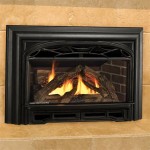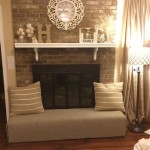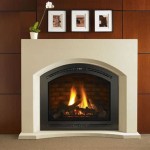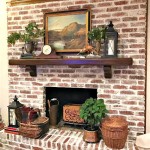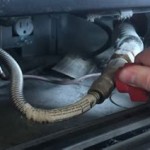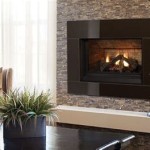How to Remodel Your Fireplace: A Comprehensive Guide
Remodeling a fireplace can dramatically transform the aesthetic and functionality of a living space. Whether the goal is to modernize an outdated design, improve energy efficiency, or simply refresh a tired focal point, a well-planned fireplace remodel can significantly enhance the value and enjoyment of a home. This article provides a detailed guide to the process, covering key considerations, planning stages, and practical execution steps.
Assessing the Existing Fireplace and Defining Goals
The first step in remodeling a fireplace is a thorough assessment of its current state. This involves inspecting the existing structure, including the firebox, hearth, mantel, surround, and any adjacent walls. Identifying any structural damage, such as cracks in the firebox or loose bricks, is crucial. Addressing these issues early on will prevent potential safety hazards and ensure the longevity of the remodeled fireplace. Furthermore, the assessment should extend to the functionality of the fireplace, evaluating its heating efficiency and ventilation performance.
Defining clear goals for the remodel is equally important. This involves determining the desired aesthetic style, considering the overall décor of the room, and identifying any specific functional improvements. For example, the goal might be to convert a traditional wood-burning fireplace to a more energy-efficient gas insert, update a dated brick surround with a modern stone veneer, or simply refresh the mantel with a new coat of paint. Establishing these objectives upfront will guide the design process and ensure that the remodel aligns with the homeowner's vision and budget.
Budget considerations play a significant role in defining the scope of the remodel. Factors influencing the budget include the cost of materials, labor, permits, and potential unforeseen expenses. Researching the prices of different materials, such as stone, brick, tile, and wood, is essential for creating a realistic budget. Obtaining quotes from multiple contractors is also recommended to ensure competitive pricing. It is prudent to allocate a contingency fund to cover unexpected costs that may arise during the remodel process.
Finally, consideration should be given to local building codes and regulations. Fireplace remodels often require permits, particularly if structural changes or fuel conversions are involved. Contacting the local building department to inquire about permit requirements and inspection protocols is crucial for ensuring compliance and avoiding potential fines.
Planning the Design and Selecting Materials
With a clear understanding of the existing fireplace and defined remodeling goals, the next step is to develop a detailed design plan. This involves creating sketches, drawings, or using design software to visualize the proposed changes. The design plan should incorporate specific dimensions, material specifications, and installation details. Consideration should be given to the overall proportions of the fireplace in relation to the room, ensuring that the design is visually balanced and harmonious.
Selecting the appropriate materials is a critical aspect of the design process. The choice of materials will significantly impact the aesthetic appeal, durability, and cost of the remodeled fireplace. Common materials used for fireplace surrounds include natural stone, brick, tile, wood, and metal. Each material offers unique characteristics in terms of texture, color, and maintenance requirements. Natural stone provides a classic and elegant look, while brick offers a more rustic and traditional feel. Tile is a versatile option that allows for a wide range of design possibilities. Wood adds warmth and character, while metal provides a sleek and modern aesthetic.
The hearth, which is the non-combustible area in front of the fireplace opening, must be constructed from fire-resistant materials such as stone, brick, or tile. The hearth should extend a minimum distance from the fireplace opening, as specified by local building codes, to protect the surrounding floor from sparks and embers. The size and shape of the hearth should be carefully considered to complement the overall design of the fireplace.
The mantel, which is the decorative shelf above the fireplace opening, can be constructed from wood, stone, or metal. The mantel should be installed at a safe distance above the fireplace opening to prevent it from overheating. The style of the mantel should be chosen to complement the overall design of the fireplace and the room.
If the remodel involves converting the fuel type, such as from wood-burning to gas, it is essential to select a suitable fireplace insert or gas logs. Fireplace inserts are self-contained units that are installed within the existing firebox, providing efficient and controlled heating. Gas logs are ceramic or concrete logs that are placed in the firebox to create a realistic flame appearance. The selection of a fireplace insert or gas logs should be based on factors such as heating capacity, energy efficiency, and aesthetic appeal.
Executing the Remodel: Step-by-Step Guide
Once the design plan is finalized and the materials are selected, the next step is to execute the remodel. This may involve hiring a contractor or performing the work as a do-it-yourself project. If hiring a contractor, it is important to select a qualified and experienced professional with a proven track record. Obtaining multiple quotes, checking references, and reviewing the contractor's portfolio are recommended before making a decision.
The first step in the execution phase is to prepare the work area. This involves protecting the surrounding furniture and flooring with drop cloths or plastic sheeting. Removing any existing trim, mantel, or surround is necessary to expose the underlying structure of the fireplace. If the remodel involves structural changes, such as widening the fireplace opening, it is essential to consult with a structural engineer to ensure that the changes are safe and compliant with building codes.
If the firebox requires repair, such as patching cracks or replacing damaged bricks, it should be addressed before proceeding with the installation of the new surround. Using a high-temperature mortar suitable for fireplace applications is essential for ensuring the longevity of the repair. The mortar should be applied according to the manufacturer's instructions, and the repaired area should be allowed to cure properly before proceeding with the next step.
The installation of the new surround involves carefully adhering the chosen materials to the existing fireplace structure. Depending on the material, this may involve using mortar, adhesive, or mechanical fasteners. It is important to follow the manufacturer's instructions for the specific material being used to ensure a secure and lasting installation. Maintaining consistent spacing and alignment is crucial for achieving a professional-looking finish.
The hearth should be installed according to local building codes and manufacturer's instructions. The hearth should be securely attached to the subfloor and leveled properly to prevent tripping hazards. If the hearth is constructed from multiple pieces, the joints should be filled with grout or mortar to create a seamless surface.
The mantel should be installed at the appropriate height above the fireplace opening, ensuring that it is securely attached to the wall. The mantel should be level and plumb, and any gaps between the mantel and the wall should be filled with caulk or wood filler. The mantel can be finished with paint, stain, or varnish to complement the overall design of the fireplace.
If the remodel involves converting to a gas fireplace, a qualified gas fitter must be hired to install the gas line and connect the fireplace insert or gas logs. The gas line should be installed according to local codes and regulations, and the gas connection should be tested for leaks before the fireplace is put into operation. The fireplace insert or gas logs should be installed according to the manufacturer's instructions, and all safety features should be tested to ensure proper operation.
Once the installation is complete, the work area should be thoroughly cleaned, and any debris should be removed. The surrounding furniture and flooring should be returned to their original positions. A final inspection of the remodeled fireplace should be conducted to ensure that all components are properly installed and functioning correctly.
Addressing Common Challenges and Troubleshooting
Fireplace remodels can present various challenges, and it is important to be prepared to address them effectively. One common challenge is dealing with uneven surfaces or irregular shapes. In such cases, it may be necessary to use shims or build up the underlying structure to create a level and consistent surface for the new surround. Another challenge is matching the existing décor or architectural style of the room. Careful consideration should be given to the color, texture, and pattern of the materials to ensure that the remodeled fireplace blends seamlessly with the existing design.
Troubleshooting potential problems is also an important aspect of the remodel process. If the fireplace insert or gas logs are not functioning properly, it is essential to consult the manufacturer's instructions and contact a qualified technician for assistance. If there are any leaks in the gas line, the gas supply should be shut off immediately, and a qualified gas fitter should be called to repair the leak. If there are any cracks or damage to the firebox, it should be repaired promptly to prevent potential safety hazards.
Maintaining the remodeled fireplace is crucial for ensuring its longevity and performance. Regular cleaning and inspection of the fireplace are recommended. The chimney should be inspected and cleaned annually by a qualified chimney sweep to remove any creosote buildup and prevent chimney fires. The fireplace surround and mantel should be cleaned periodically to remove dust and dirt. Any cracks or damage to the surround, hearth, or mantel should be repaired promptly to prevent further deterioration.

30 Fireplace Remodel Ideas For Any Budget

Looking To Remodel Your Fireplace Tips You Need
5 Amazing Inexpensive Easy Fireplace Remodel Transformations Designed

17 Fireplace Remodel Before And After How To Your Brick Makeover Redo

30 Fireplace Remodel Ideas For Any Budget

Fireplace Update Before Afters Luce S Chimney Stove

Fireplace Remodel Kristen Rinn Design

How To Update A Fireplace On Budget Home Matters Ahs

Fireplace Remodel Renovation Gas Wood Electric

Looking To Remodel Your Fireplace Tips You Need
Related Posts

